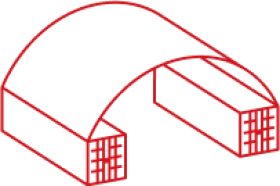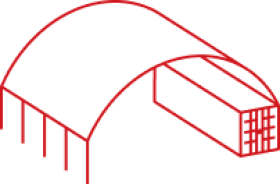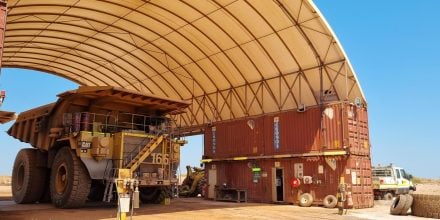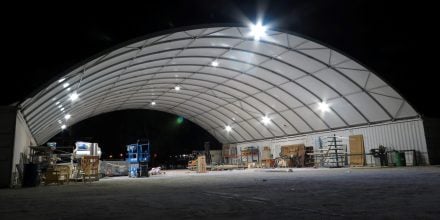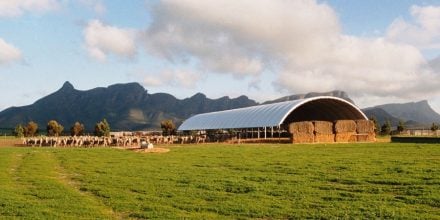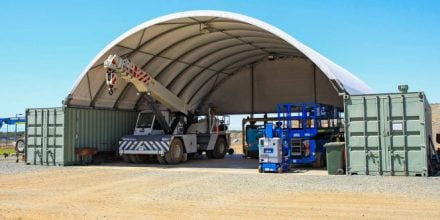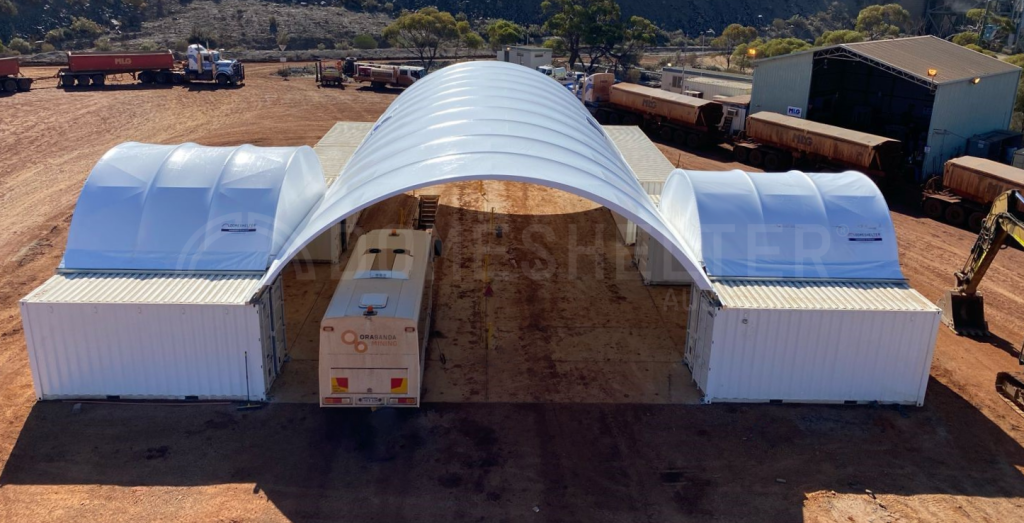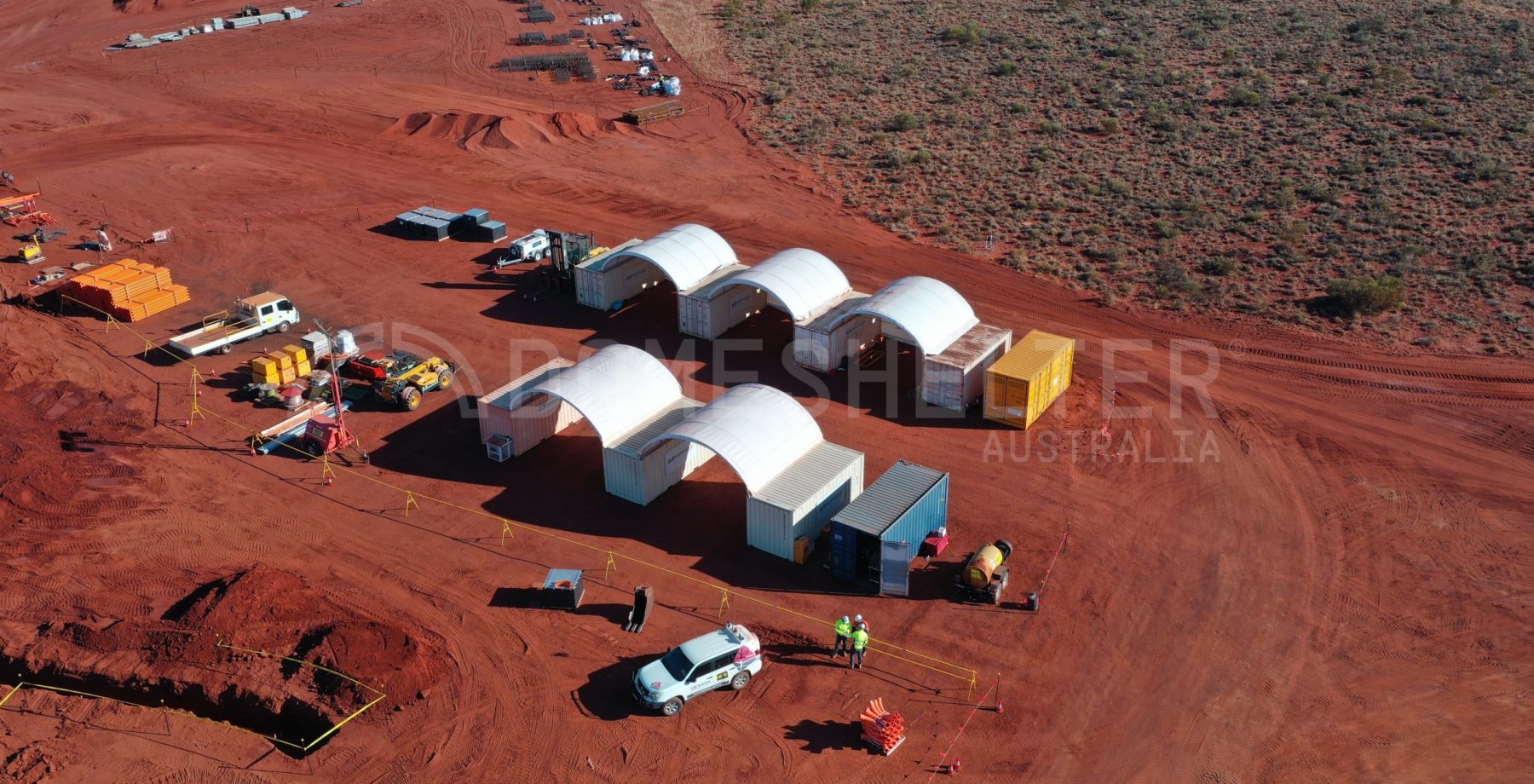
When it comes to Fabric Shelters, many people wonder about their ventilation capabilities. This is a critical question for consideration, as proper ventilation is essential for the comfort and safety of anyone using or storing items within a Fabric Shelter.
At DomeShelter Australia, we understand the importance of proper ventilation in our Shelters. In this article, we will explore the topic of ventilation, covering everything from basic ventilation needs to fully sealed Fabric Shelters, and discussing how to improve air flow and prevent condensation.
Whether you are considering a Fabric Shelter for your worksite, or simply want to know more about the ventilation of this type of structure, this article will provide insights into the ventilation capabilities of Fabric Shelters and how to ensure optimal air flow and comfort.
Why is Ventilation Important?
Heat enters structures in a number of ways; wavelengths of light entering the building, hot air simply entering through open doors, etc. Once heat enters a structure, it can be slow to dissipate if there’s no way for air to escape. Ventilation is particularly important for the purpose of cooling.
Air changes are also an extremely important way to maintain ‘air quality’ in a structure. A lack of ventilation can have negative health effects. Without proper ventilation, structures become susceptible to stagnant air, where bacteria and carbon make indoor air more polluted than the air outside.
Indoor air quality (IAQ) is a term which refers to the air quality within and around buildings and structures. IAQ is known to affect the health, comfort and well-being of occupants. Poor indoor air quality has been linked to Sick Building Syndrome and reduced productivity.
The amount of fresh outside air that needs to be introduced into a building varies widely depending on the activity and level of occupancy associated. Air Changes per Hour (ACH) is the number of times that the total air volume in a space is completely removed or replaced hourly. Recommended ACH generally correlates with the use of the building – for example, 4 ACH may be accepted for commercial buildings, but the rate may increase for more specific uses such as machine shops and paint booths.
Some industrial and specific use cases may involve more strictly regulated ACH rates. Ventilation and air quality experts should be consulted in these instances.
Proper ventilation in structures helps:
- Control moisture levels
- Prevent health risks associated with stale air
- Increase air quality
- Control temperature and prevent hot air build-up
- Enhance workspace comfort
Ventilation in Fabric Shelters
Standard Fabric Shelters without Endwalls are naturally well-ventilated. The openings on either side allow free air flow through the Shelter.
Fully-sealed Shelters are where ventilation needs to be considered more closely and where clients will often ask questions. A Shelter with Endwalls on both ends without ventilation aids can trap air inside with no circulation. This can become of particular concern in summer, where an unventilated Shelter may be hot and stifling.
These Shelters are where ventilation add-ons and other solutions are typically sought to improve the circulation of air through a Shelter.
Condensation in Fabric Shelters
Condensation is the opposite of evaporation; it is the process in which water vapor in the air becomes liquid. This usually occurs when humid air comes in contact with a cold surface.
Some activities generate increased volumes of water vapor than others – for example, breathing creates water vapour, so Structures with lots of people or animal traffic will have more water vapour inside. If ventilation is inadequate, it will have no way to escape the inside of a Structure and condensation will then be more likely.
The level of condensation expected within a Fabric Shelter can vary widely depending on the location of the Shelter, and what activities will be taking place inside it. If condensation is an issue, the ventilation capacity of the Shelter may need to be improved with add-ons. Always consult an expert or reach out to the DomeShelter™ Team if you have any questions.
How Can Ventilation in Fabric Shelters be Improved?
There are a few key improvements to Fabric Shelter ventilation that we typically employ at DomeShelter Australia. These are:
- Open ends
- Doorways
- Louvres
Where a Shelter with one or both ends open or only partial endwalls is possible, this is the easiest and most cost-effective method to ensuring the Shelter has constant, free air flow. Post-mounted or Truss Shelters can have open sides, partially or fully open, to allow air flow, if full Endwalls are still preferred.
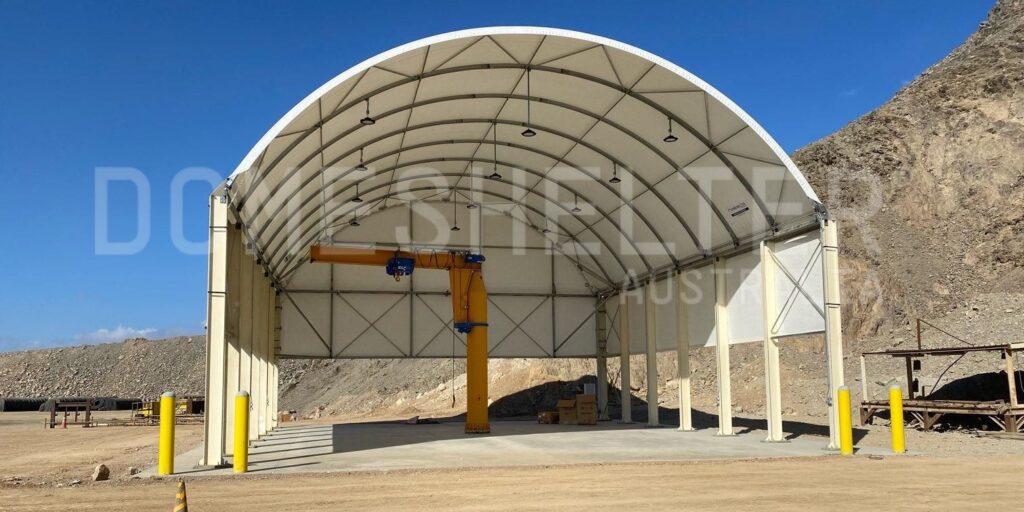
Shelters with open ends, partial Endwalls or openings in sidewalls are naturally well-ventilated
Container Mounted Shelters can be designed and installed with gaps in the container sides – these can be large or slim – to similarly allow air to flow freely through the Shelter. This means that Shelters with Endwalls or very long Shelters can still experience adequate ventilation.
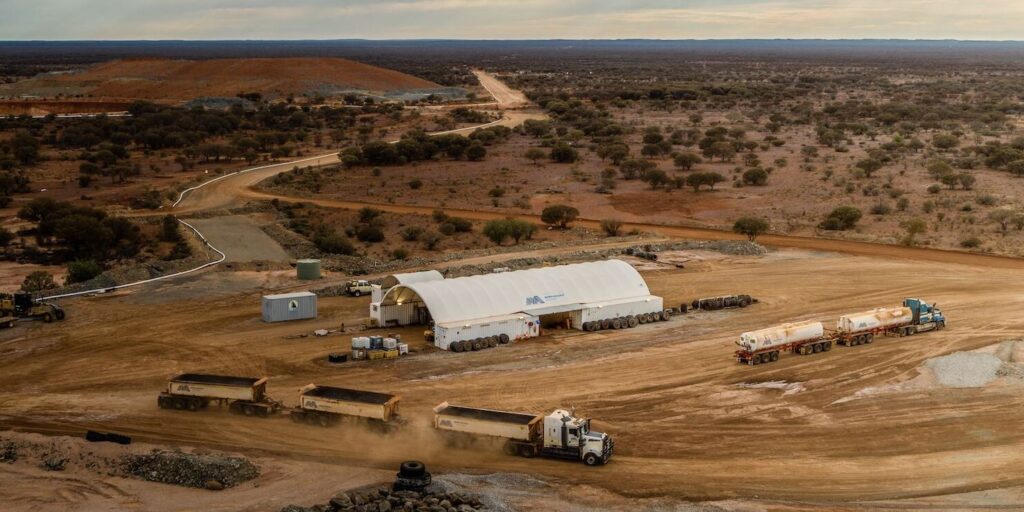
Merkanooka’s long Shelter has gaps in the container sides to allow airflow through the middle of the Shelter for better ventilation
Alternatively, for instances where clients would prefer a fully enclosed Shelter with Endwalls, doorways can allow for easy ventilation. Doors can be opened to allow fresh air to circulate through the Shelter and then be closed when the Shelter needs to be fully enclosed. Larger doorway openings will allow more air to enter the Structure.
Where something more intensive than an open side or doorway is desired, louvres can be incorporated into Shelters to improve air flow. Louvres can be either fixed or operable, to suit specific client needs.
The best course of action is to discuss your specific ventilation needs with your DomeShelter™ Consultant, who can run you through the add-ons available and help you understand the benefits and constraints associated with each. This way, you can have a ventilation option that is fully tailored to your specific project.
For example, Komatsu required a Fit-For-Purpose ventilation solution for a recently installed paint booth in Perth. The Shelter had to be fully enclosable to prevent paint and other chemicals from escaping and contaminating the surrounding air/environment, but adequate ventilation was still necessary for workplace health and safety – a solution was created where large doors with in-built louvres created two-fold ventilation potential, where the doors could be opened when painting was not being done to allow the Shelter to air out, but adequate air flow was still possible via the louvres when the doors have to be closed.
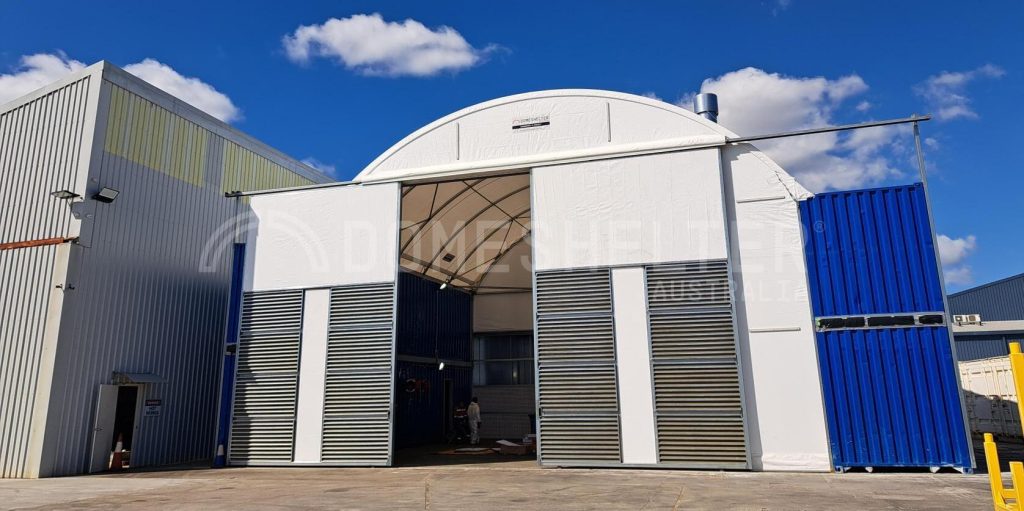
Komatsu’s DomeShelter™ Structure
In Conclusion
Fabric Shelters, like any kind of Structure, may experience ventilation challenges if fully enclosed. Add-ons are available to aid better air flow through the Shelter and ensure the health and comfort of occupants.
Some industries may have intense regulations around air circulation within workspaces; in these instances, a ventilation expert should always be consulted first to ensure that your specific needs are fully understood.
A DomeShelter™ consultant can run you through the add-ons available to better ventilate a Fabric Shelter. These are most commonly open ends or sides, doorways or louvres, but other options may be applicable upon further discussion. Get in touch with the DomeShelter™ Team using our contact page.
